Semantics modelling of systems
Semantics modelling of systems
Frédéric Herbreteau, Bordeaux INP/LaBRI (frederic.herbreteau@bordeaux-inp.fr)
What is a model?

- abstract representation of an object or a phenomenon
- view of selected features or parameters of the object / phenomenon
- with a specific goal of understanding its properties
Abstraction is an art
“Le taureau”, Pablo Picasso, 1942
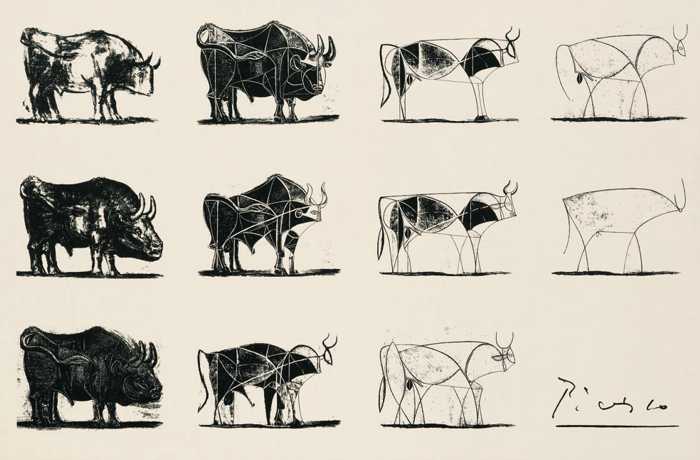
A model of a house
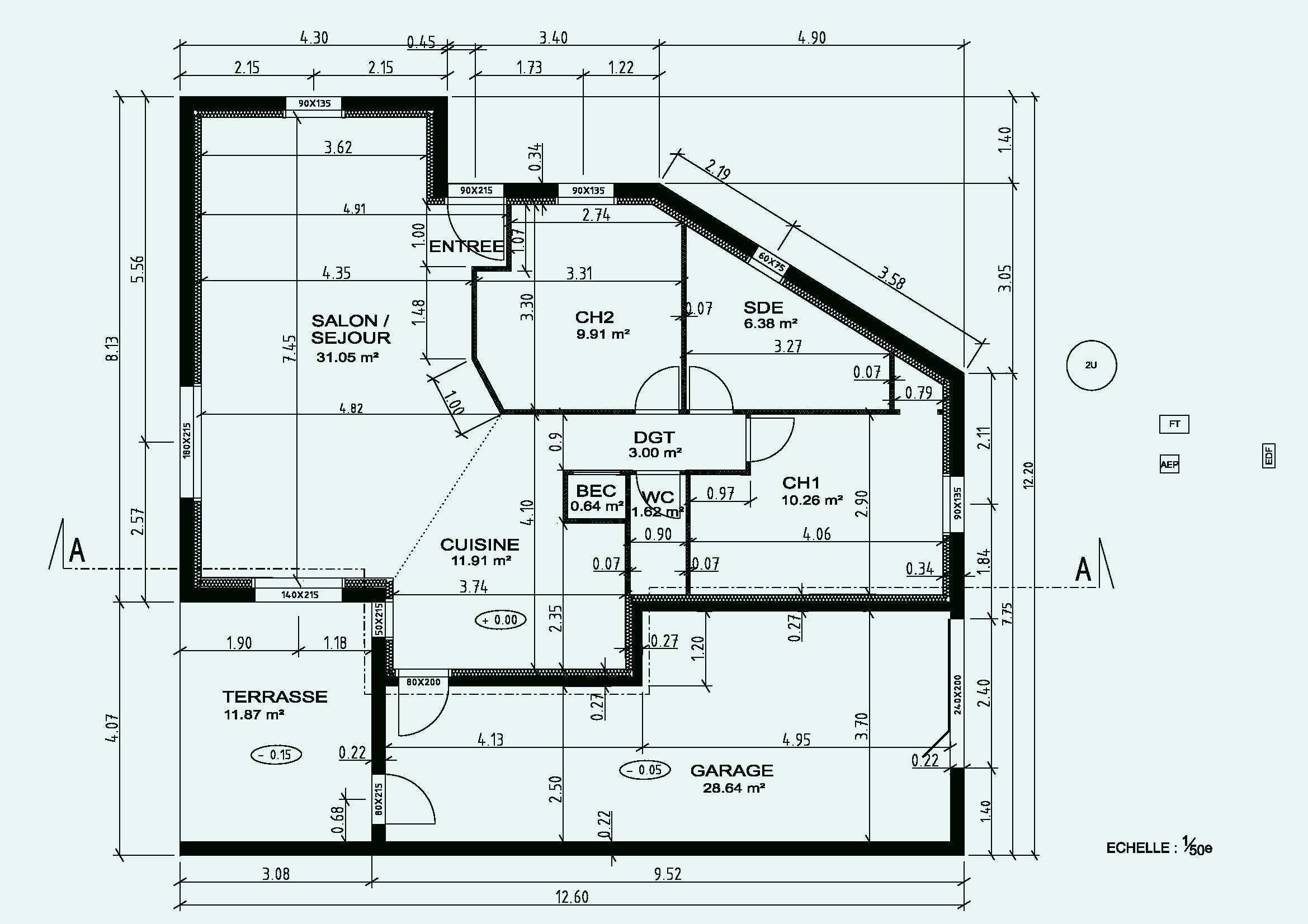
- precise information to build the walls
- but not for electrical wiring
Another model of a house

- good for selling the house
- no relevant information to build it
Models for software engineering
Many aspects to describe, with dedicated models:
- class diagram: software architecture
- deployement: placing components on nodes
- use cases: users and tasks
- activities: control flow to achieve a task
- state diagram: evolution of an object during its lifetime
- sequence diagram: interactions between components to achieve a task
- …
UML is one (informal) notation (among many others) to build such models
Expectations for a model for software verification
What properties do we want to check?
- The program terminates / does not terminate
- The computed value is correct
- A sequence of events is correct
- Mutual exclusion
- No deadlock
- …
We need a formal model of the runs of a program (or a system)
Modeling the behaviors of a system
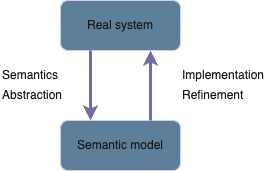
Semantics model = formal representation of:
- the states of the system
- the stepwise behavior
- the initial states
- and state properties
Transition systems and runs
A transition system (or state machine) $T = (S, S_0, \to, AP, L)$ is defined by:
- $S$ is the set of states with initial states $S_0 \subseteq S$
- $\to \subseteq Q \times Q$ is a transition relation
- $AP$ is the set of atomic propositons (i.e. state labels)
- $L$ labels each state in $S$ by a subset of $AP$
A run is a (potentially infinite) sequence of states: $s_0 s_1 \cdots s_n \cdots$ such that $s_0 \in S_0$ and $s_i \to s_{i+1}$ for every $i \ge 0$
Example: drink vendor machine
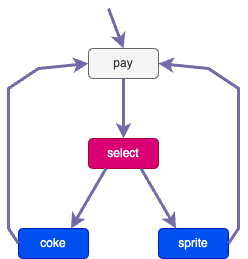
What is abstract in this model?
- Consider $AP=\lbrace \textcolor{blue}{\bullet}, \textcolor{red}{\bullet} \rbrace$
Characterize runs that satisfy:
- “every paid drink is served”?
- “every served drink has been paid”?
Do the runs of this model satisfy these properties?
Example: a digital circuit
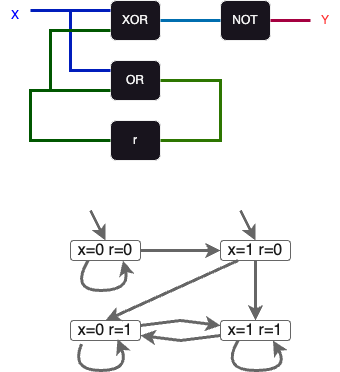
- output function: $y = \neg (x \oplus r)$
- transition function: $\delta_r = x \lor r$
- initial register value: $r = 0$
What is abstract in this model?
Run on input: $010100$?
- Consider $AP = \lbrace 0, 1\rbrace$
Label states such that it matches output
Example: concurrent program
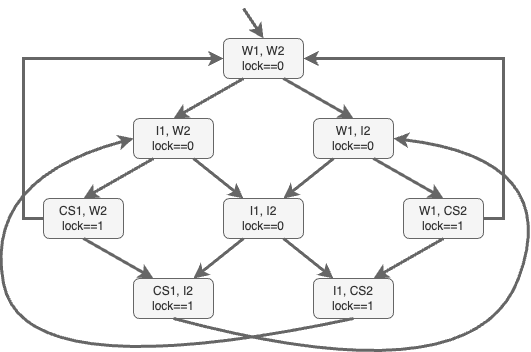
shared bool lock = 0;
process:
while (true):
if (lock == 0) then lock := 1
// critical section
lock := 0
What is abstract in this model?
- $AP=\lbrace req_1,cs_1,req_2,cs_2\rbrace$
Characterize runs that satisfy:
- mutual exclusion
- absence of starvation for $P_1$
Conclusion
- transition systems are
- a semantics model that yields a formal representation of the behaviors of a system
- easily manipulated by algorithms (extensions of graphs)
- In practice, transition systems are described using high-level formalisms (BPMN, PlusCal/TLA+, extended automata,…)
Any verification using model-based techniques is only as good as the model of the system